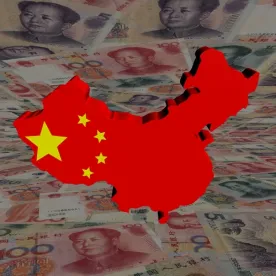For months, global patent practitioners have been expecting China to announce sweeping, significant changes to the nation’s system of intellectual property laws—and they were not disappointed.
On Oct. 17, the Standing Committee of the People’s Congress approved a comprehensive slate of intellectual property law reforms that will impact protection of industrial designs, pharmaceutical patent rights, and patent infringement enforcement. The revisions, which are the first significant intellectual property law changes in Chinese patent law since 2008, take effect June 1, 2021.
China already has become one of the world’s most important jurisdictions for intellectual property rights and these changes seemingly will make China an even more attractive venue for patent filings. The revisions strengthen intellectual property protections and give rights holders greater leverage to enforce their patent rights in the market.
The new provisions include:
Expanded Protections for Industrial Designs
Under the amended law, China will recognize a 15-year term for industrial designs, up from 10 years under current law. In addition, the revisions to China’s Industrial Design protections will also allow for protection for partial designs of articles, not just the design of an article as a whole.
These changes are a significant move to harmonize industrial design protection with the requirements for the joining the Hague System for the International Registration of Industrial Designs, which currently includes 91 other nations. Having China join the Hague System will make the Hague System significantly more attractive for protecting Industrial Designs since a separate application would no longer be required for protection in China. This move is a strong indication that China wishes to join the Hague System and to court international investment and is willing to offer the appropriate protections for designs needed to satisfy global companies.
Additional Patent Rights for Life Science Innovators
In addition, pharmaceutical patent holders now may request up to five additional years to compensate for the time taken for the new drug application (NDA) process. The total effective patent right period after the new drug is marketed shall not exceed 14 years.
The revisions also give pharmaceutical patent holders additional tools with which to resolve patent disputes with generic manufacturers. While patent holders still may not file a preemptive infringement action against generic drug companies, Article 76 of the revised law provides a mechanism to resolve such disputes.
Current Chinese patent law requires the generic drug to be launched before a patent infringement suit may be filed. But the new law allows both the patent holder and the generic company to request clarification during the drug marketing authorization review period. During this period, the courts now will be able to decide whether or not a generic falls under the scope of an existing patent.
This new patent linkage regime is likely to spur pharmaceutical and biotech development in China, given that companies that invest in the research and development needed to produce new products now have better tools to protect those innovations.
Tougher Penalties for Patent Infringement
One of the biggest provisions in the revised patent law is in the area of patent infringement. Once the new law takes effect, courts will be able to levy punitive damages of up to five times the amount of damages established at trial. The revisions also put a greater onus on the alleged infringer to turn over evidence that may shed light on the extent of the infringement. If the defendant refuses to turn over this evidence, the court now may award damages based on the plaintiff’s claim.
In practice, those punitive damages are likely to be somewhat muted by the fact it can be difficult to establish loss in Chinese courts. But still, the quintupling of damages (compared to treble damages under US law) sends a powerful signal that Chinese officials are serious about deterring patent infringement.
China also recently increased the maximum statutory penalties for patent infringement. Statutory damages have gone up from one million yuan (approximately $150,000) to five million yuan ($750,000).
The revisions put significantly more bite into the enforcement of patent rights in China. In fact, patent holders mulling a potential infringement claim should consider delaying filing until June 1, in order to take advantage of the changes.
These comprehensive set of changes to Chinese patent law largely have received a positive reaction from patent practitioners—and for good reason. The revisions give patent holders a longer period to control their patent rights and expanded means by which to enforce those rights. There remains room for additional improvement, but China’s 2021 patent law changes should be seen as a big step forward for one of the world’s most important markets.





 />i
/>i

